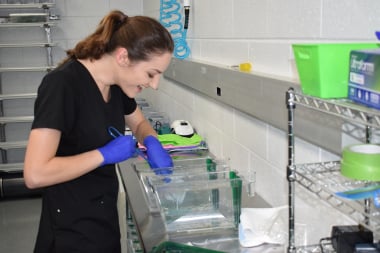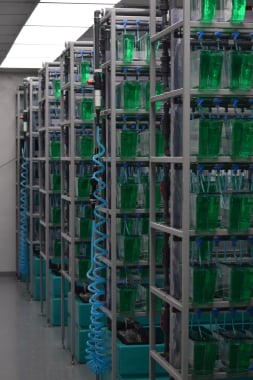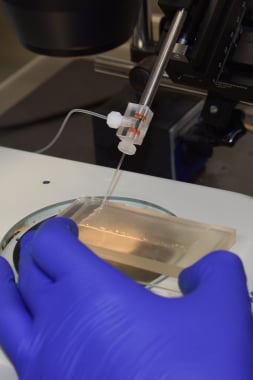
The lower level of the JC Self Research Institute is home to the state-of-the-art Hazel and Bill Allin Aquaculture Facility. This facility houses over ten thousand zebrafish that are used for research on genetic disorders.
The first question many people ask is ‘Why zebrafish?”
Zebrafish (whose formal name is Danio rerio) have become a very popular model organism in research for many reasons. They are transparent and develop ex utero (outside the mother) so it is possible to follow the earliest stages of development using a microscope. This feature allows researchers to watch different organs develop and see how this development might be altered in the context of genetic disorders. They are also easy to breed and maintain which means large numbers of offspring can be obtained for studies. This easy breeding also facilitates drug screening using this organism. As a vertebrate organism, zebrafish share many genes with humans and have certain tissues such as the heart valve, craniofacial cartilage and nervous system that develop in the same way as they do in us. Lastly, zebrafish are genetically amenable which means scientists can use genome editing techniques to generate disease models in this organism. The Allin Aquaculture Facility is a major component of the Division of Functional Studies. Dr. Flanagan-Steet’s team is currently using the zebrafish system for functional studies on several variants and genes in order to classify the pathogenicity of the variants and understand the function of different genes in normal and disease processes.
The Hazel and Bill Allin Aquaculture Facility house several different types of zebrafish lines we use in our research. These include lines that express fluorescent proteins in specific tissues like the neurons and cartilage cells. This allows researchers to quickly identify these tissues using a microscope and determine how their development might be affected by genetic variations. The facility also contains multiple wild type strains of zebrafish and several disease models that have been used to uncover new aspects of the disease process in many metabolic disorders. The zebrafish lines in this facility receive daily care and are fed three times a day with both flake and brine shrimp. The Aquaneering aquaculture system is equipped with an automatic dosing system to adjust the pH and salt concentration in the water, and an 80-gallon biofilter tower that contains beneficial bacteria that remove toxic ammonia from the water.
GGC’s Research Division maintains a Cellular Imaging Core with instrumentation including an Olympus FV1300 confocal microscope and fluorescent cell sorters that allow researchers to visualize what’s happening during the development of the zebrafish and to sort out specific cell types from these animals for deeper study.



